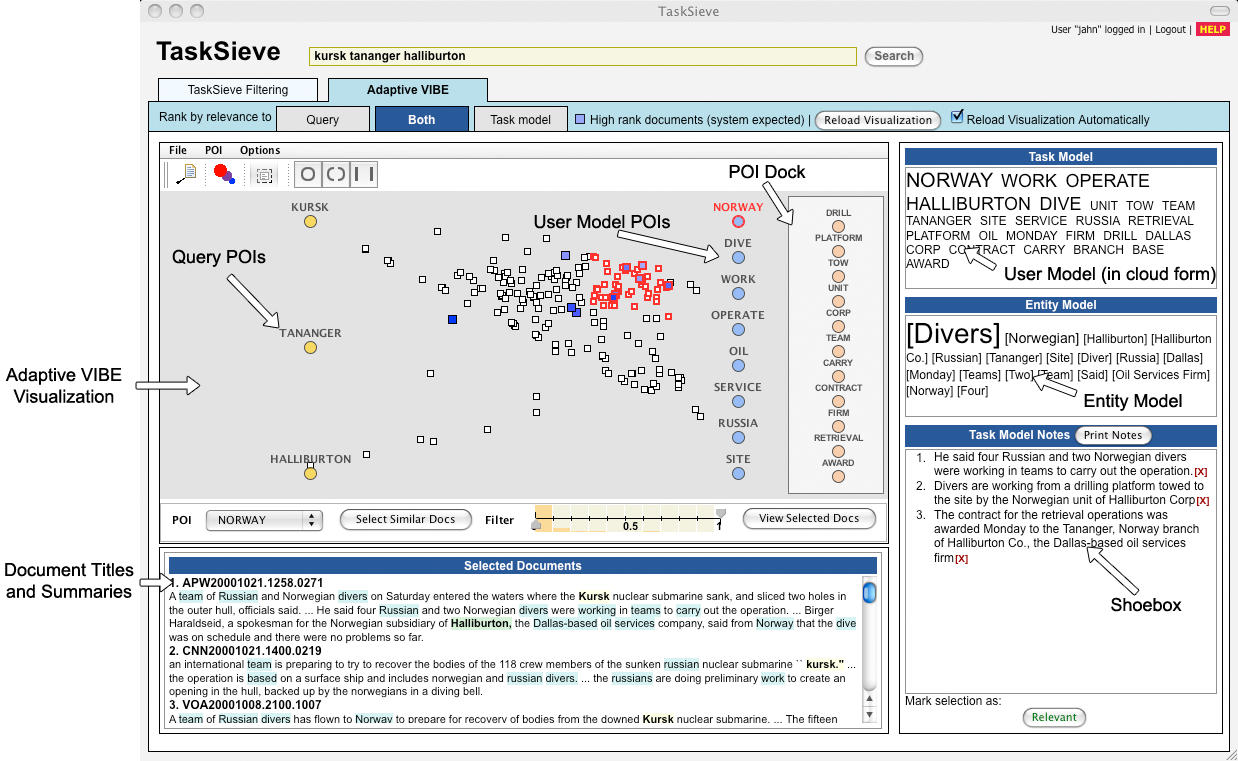Difference between revisions of "Adaptive VIBE"
From PAWS Lab
(New page: In this system, a special type of the user model is supported called as a task model. It is aimed at supporting information analysts who are required to solve a specific task. A very short...) |
|||
| Line 1: | Line 1: | ||
In this system, a special type of the user model is supported called as a task model. It is aimed at supporting information analysts who are required to solve a specific task. A very short term user model is constructed to model each different user task and personalization is made with the task models. A post filtering approach was applied to this purpose. The ad-hoc retrieval results triggered by user queries were re-ordered using the task model so that more relevant documents to the task model should be ranked up in the lists. In terms of the interface, we added a control with which users can control the effects of the query and the task model according to their needs and the context. | In this system, a special type of the user model is supported called as a task model. It is aimed at supporting information analysts who are required to solve a specific task. A very short term user model is constructed to model each different user task and personalization is made with the task models. A post filtering approach was applied to this purpose. The ad-hoc retrieval results triggered by user queries were re-ordered using the task model so that more relevant documents to the task model should be ranked up in the lists. In terms of the interface, we added a control with which users can control the effects of the query and the task model according to their needs and the context. | ||
| − | [[Image: | + | [[Image:VisualTaskSieve.png|frame|center|TaskSieve system]] |
Revision as of 01:45, 11 December 2009
In this system, a special type of the user model is supported called as a task model. It is aimed at supporting information analysts who are required to solve a specific task. A very short term user model is constructed to model each different user task and personalization is made with the task models. A post filtering approach was applied to this purpose. The ad-hoc retrieval results triggered by user queries were re-ordered using the task model so that more relevant documents to the task model should be ranked up in the lists. In terms of the interface, we added a control with which users can control the effects of the query and the task model according to their needs and the context.

